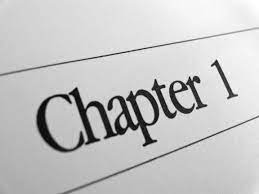How Long Should a First Chapter Be?
How Long Should a First Chapter Be?
The first chapter in a novel is the most important. It’s what makes readers want to keep reading, and it’s also what sells books. So, you need to hook your reader with an intriguing first sentence, then make them want more by giving them a taste of the story you’re about to tell. But how long should that first chapter be?
Experts say the first chapter should be between 3,000-5,000 words in length for best results if you are writing fiction. This will allow you time to introduce your protagonist and establish their world before things start moving along. If this isn’t possible due to other constraints (i.e., word count), don’t worry; just do your best!
The first chapter of a nonfiction book should be shorter—around 2,000 words or less. You want the first chapter to cover the basics and what you plan to talk about. After that, you don’t want to dig deep into the subject. Just get the reader ready for what’s to come.
The first chapter of a book is the best opportunity to hook your reader.
There is no magical formula for exactly how long a first chapter should be, but the first chapter is the best opportunity to hook your reader, so you must make them want more.
A first chapter should be long enough to introduce the protagonist and set the stage for what is going on.
This could differ from book to book, and it’s OK to go over in word count if you need more.
The first chapter can either be written in chronological order or as a flashback that reveals more of the story later. For more experienced writers, starting with a flashback is a great first chapter. Flashbacks can be a strong way to deliver information too challenging to introduce at the start.
The end of the first chapter should leave readers with an unanswered question so that they’re compelled to keep reading.
Get that hook in deep. If a reader is going to stop reading, it is likely at the end of the first chapter. End that first chapter with a cliffhanger.
First chapters are often used as teasers — they need not necessarily contain all the information about what happens in the rest of the book.
Think of the first chapter as a teaser. You want to entice the reader to the rest of the book while giving them plenty of groundwork for the story.
If you have over 10,000 words in your manuscript, then you should divide it into two parts and use chapters as natural breaks in the story.
Shorter books do well with evenly paced chapters. Try to have a mini cliffhanger at the end of each chapter—kind of like the end of a binge-worthy TV series. You can’t wait to find out what happens next!

There are many ways that you can incorporate short chapters into your novel — try dividing up large sections by location or time.
Some tips on creating shorter chapters to improve pace are:
Start each chapter with a new scene or some suspenseful event that will lead into the next chapter.
Make your chapters varied in length and size, so it doesn’t feel like they’re all just five pages long. A slow intro followed by an intense moment makes for a perfect first page.
You can also add plot twists or revelations in the first chapter to keep things interesting.
Try sprinkling in a plot twist or new revelations in the middle of the first chapter to break up the rhythm for the reader. You don’t want to play all your cards up front but play a few of the good ones to keep them reading.
Do you have to start the first chapter with action, or can you start with exposition?
The best way to start the first chapter is with something that will grab the reader’s attention, whether it be action or exposition. Of course, action is the easiest route to grab the reader’s attention.
Think about what you want your readers to know before they read on and write accordingly.
Do not use too much of either in one chapter, as you’ll lose momentum for the rest of your story.
How Long Should a First Chapter Be?
Should you include dialogue in your first chapter?
A common question, and it depends on your story.
If the story is heavily character-driven, and readers need to understand what characters are thinking or feeling without outside narration, then yes.
Otherwise, no.
The first chapter sets the hook and isn’t necessarily going to flow or read like the rest of the book. Do what’s best to engage the reader.
Must all the events in a story occur within the same time frame, or can some events happen before others?
It’s easier to keep everything in a specific timeline, but jumping around can add a lot of dynamic energy to the book for more advanced writers.
In the first chapter, stick to one time frame to help the reader grasp the character(s), world and story, even if it’s a flashback.
What are some common mistakes people make when writing their first chapters?
The first mistake is to have a first chapter that introduces the mechanics of writing. This only bores readers.
The second mistake is for writers to include too much detail about characters or settings in the first chapters. Too many details in these sections make it hard for readers to get hooked and buy into the story.
It’s tempting for the author to want to give all the great details of their story, but a reader wants movement and action.
Why Should You Care About the Length of Your Chapters? (How Long Should a First Chapter Be?)
Chapter length can affect your story, especially for pacing. For example, if you have a lot of action in your first few chapters, it would be good to slow things down with a slower-paced chapter.
Just like a music album, there is a mix of different-paced songs.
The length of your writing also affects the pace. For example, a short story has fewer words and shorter sentences than most novels, which use more words per sentence than short stories.
What’s the Point of Having Longer Chapters in General?
With some books, you need a heavy descriptive chapter to explain things to the reader.
With horror stories, it is often important to let the reader know where they are in the story by telling them about what’s going on around them so their imagination can take over for the scary stuff.
In a mystery novel, there might be clues for readers to find which plot points will come later.
It makes sense then to add in long descriptive chapters but make sure you have a fast-paced, action-packed one after and never make a long descriptive chapter your first one.
Contact us for your book editing needs.
How Long Should a First Chapter Be?
How Long Should a First Chapter Be?
